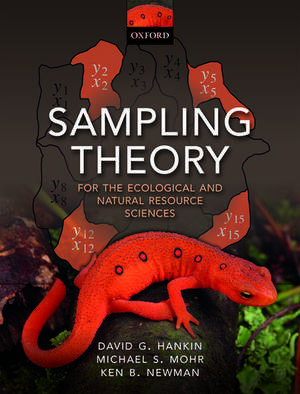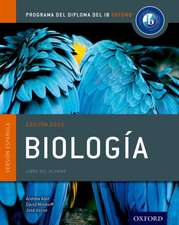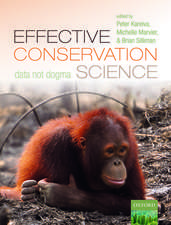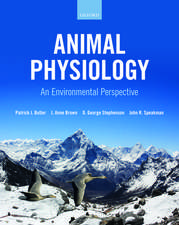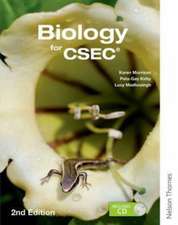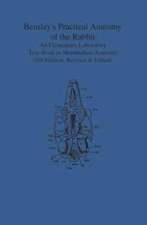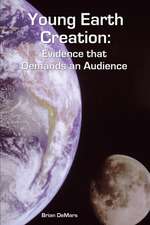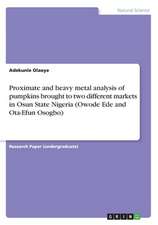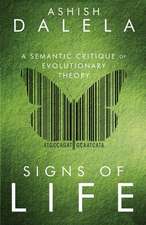Sampling Theory: For the Ecological and Natural Resource Sciences
Autor David G. Hankin, Michael S. Mohr, Kenneth B. Newmanen Limba Engleză Paperback – oct 2019
| Toate formatele și edițiile | Preț | Express |
|---|---|---|
| Paperback (1) | 360.32 lei 32-37 zile | |
| OUP OXFORD – oct 2019 | 360.32 lei 32-37 zile | |
| Hardback (1) | 664.70 lei 11-16 zile | |
| OUP OXFORD – oct 2019 | 664.70 lei 11-16 zile |
Preț: 360.32 lei
Preț vechi: 436.84 lei
-18% Nou
Puncte Express: 540
Preț estimativ în valută:
68.95€ • 72.13$ • 57.27£
68.95€ • 72.13$ • 57.27£
Carte tipărită la comandă
Livrare economică 24-29 martie
Preluare comenzi: 021 569.72.76
Specificații
ISBN-13: 9780198815808
ISBN-10: 0198815808
Pagini: 360
Dimensiuni: 188 x 245 x 18 mm
Greutate: 0.91 kg
Editura: OUP OXFORD
Colecția OUP Oxford
Locul publicării:Oxford, United Kingdom
ISBN-10: 0198815808
Pagini: 360
Dimensiuni: 188 x 245 x 18 mm
Greutate: 0.91 kg
Editura: OUP OXFORD
Colecția OUP Oxford
Locul publicării:Oxford, United Kingdom
Recenzii
I echo what the authors identified as a general lack of formal training into sampling theory. Sampling Theory has filled a gap in my lack of knowledge surrounding certain designs and analytical concepts, so this book should also be a good resource for applied ecologists and researchers, and as the primary text in a graduate-level course on sampling design.
A good introduction to a difficult subject . . . The volume is easy to read if one can handle the mathematics and statistical theory required. There are many interesting examples (I especially like the one about hunting mushrooms) to motivate readers. Many exercises are also given at the end of most chapters.
A good introduction to a difficult subject . . . The volume is easy to read if one can handle the mathematics and statistical theory required. There are many interesting examples (I especially like the one about hunting mushrooms) to motivate readers. Many exercises are also given at the end of most chapters.
Notă biografică
David G. Hankin is a quantitative fisheries scientist who held a faculty position in the Department of Fisheries Biology at Humboldt State University (HSU) from 1978-2014. He holds a PhD in Fisheries Science from Cornell University. Over his long academic career at HSU, he taught introductory courses on fish population dynamics and sampling theory to audiences of senior and MS-level graduate students from natural resource and biological sciences. His fisheries research has focused on population dynamics and management of commercially important species, specifically Dungeness crab and Chinook salmon, with a special interest in life history and fishery inferences based on analysis of code wire tag recovery data. He has actively participated in the fishery management process, serving as a member of the Scientific and Statistical Committee of the Pacific Fisheries Management Council (1987-1992) and as a US member of the Committee on Scientific Cooperation (2001-2015). Michael S. Mohr is Supervisory Mathematical Statistician and Fisheries Assessment Program Leader for NOAA Fisheries, Southwest Fisheries Science Center, Fisheries Ecology Division, and a Research Fellow at the Institute of Marine Sciences, University of California, Santa Cruz. He holds a Bachelor of Arts degree in Mathematics and a Master of Science degree in Fisheries Science from Humboldt State University and received post-graduate training in Statistics at the University of California, Berkeley. He has over 30 years of experience in quantitative population assessment, applying sampling theory to resource management problems, and developing statistical methods and estimators.Ken B. Newman is principal researcher in statistical methodology for Biomathematics & Statistics Scotland and reader in the School of Mathematics, University of Edinburgh. He has a PhD in statistics from the University of Washington. From 1993 through 2003 he was on the faculty of the Division of Statistics at the University of Idaho and then moved to the University of St Andrews as a senior lecturer with a joint appointment in the Centre for Ecological and Environmental Modelling. Between 2006 and 2017, he was a mathematical statistician for the US Fish and Wildlife Service where he developed sampling designs for aquatic species and methods for estimating fish abundances and modeling fish population dynamics. His current position includes developing and applying statistical methods for agricultural and environmental processes as well as teaching Bayesian statistics.
